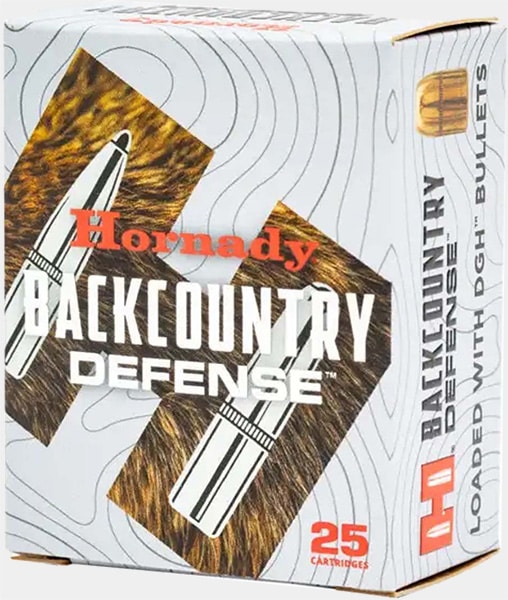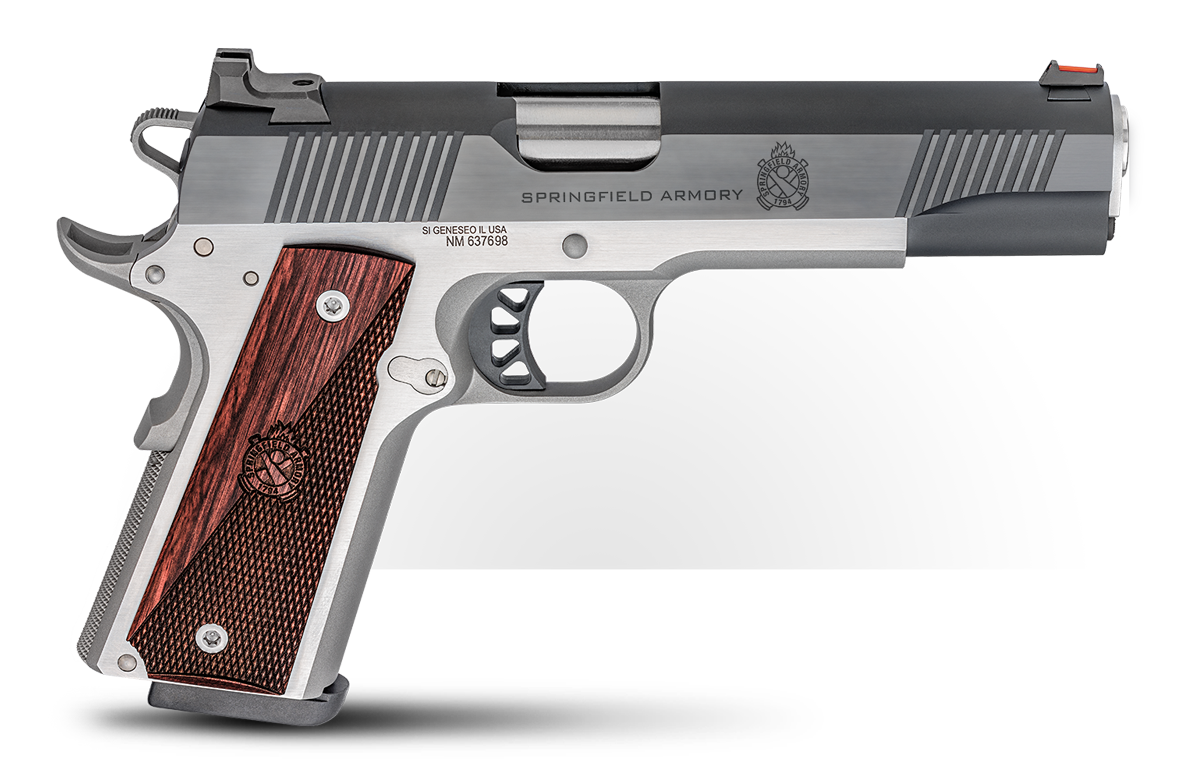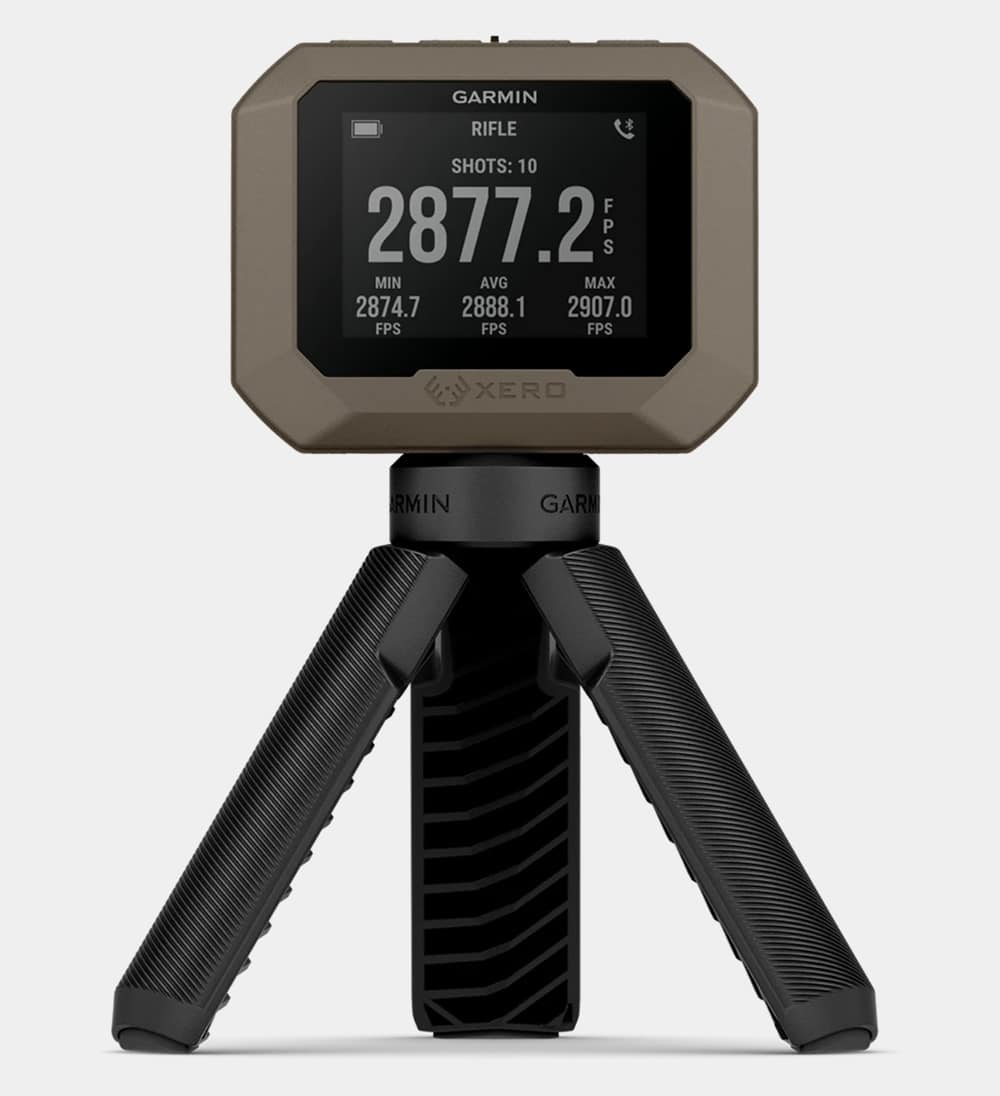In today’s article, a review of Hornady Backcountry Defense 10mm Auto ammunition, Wayne van Zwoll examines the load from the perspective of a outdoorsman with a need for bear-stopping power. How well does it perform? The author goes hands-on with the ammo to find out. The ammunition tested in this review was provided by Hornady Manufacturing.
Bringing stock from the hills before snow was a routine ride for Two Pony. Under pregnant skies, he and his partner spun out the day gathering. Strays remained when the cowboys pulled their saddles at a line camp. Snow came that night. At dawn’s colorless blush, they followed tracks to a cow. She was dead.
The soft, deep snow muted the bear’s rush. Two Pony turned late, pulled his .38-40 Colt and fired twice. Then he died. Struck down by a great paw, his friend lunged for the revolver. He would remember claws shredding his face, tasting his own blood, the powerful stench — but not the hollow pop that drove a bullet up through the beast’s chin into its brain.
On that lonely mountain before the Depression, grizzlies were an occupational hazard for cowhands, who shot them as chance allowed. With rifles. Only by chance would a handgun stop a bear attack. The .38-40’s 180-grain .401 bullets had less punch than beefier missiles from the .44-40 and .45 Colt, albeit it passed as a heavy hitter in its day.
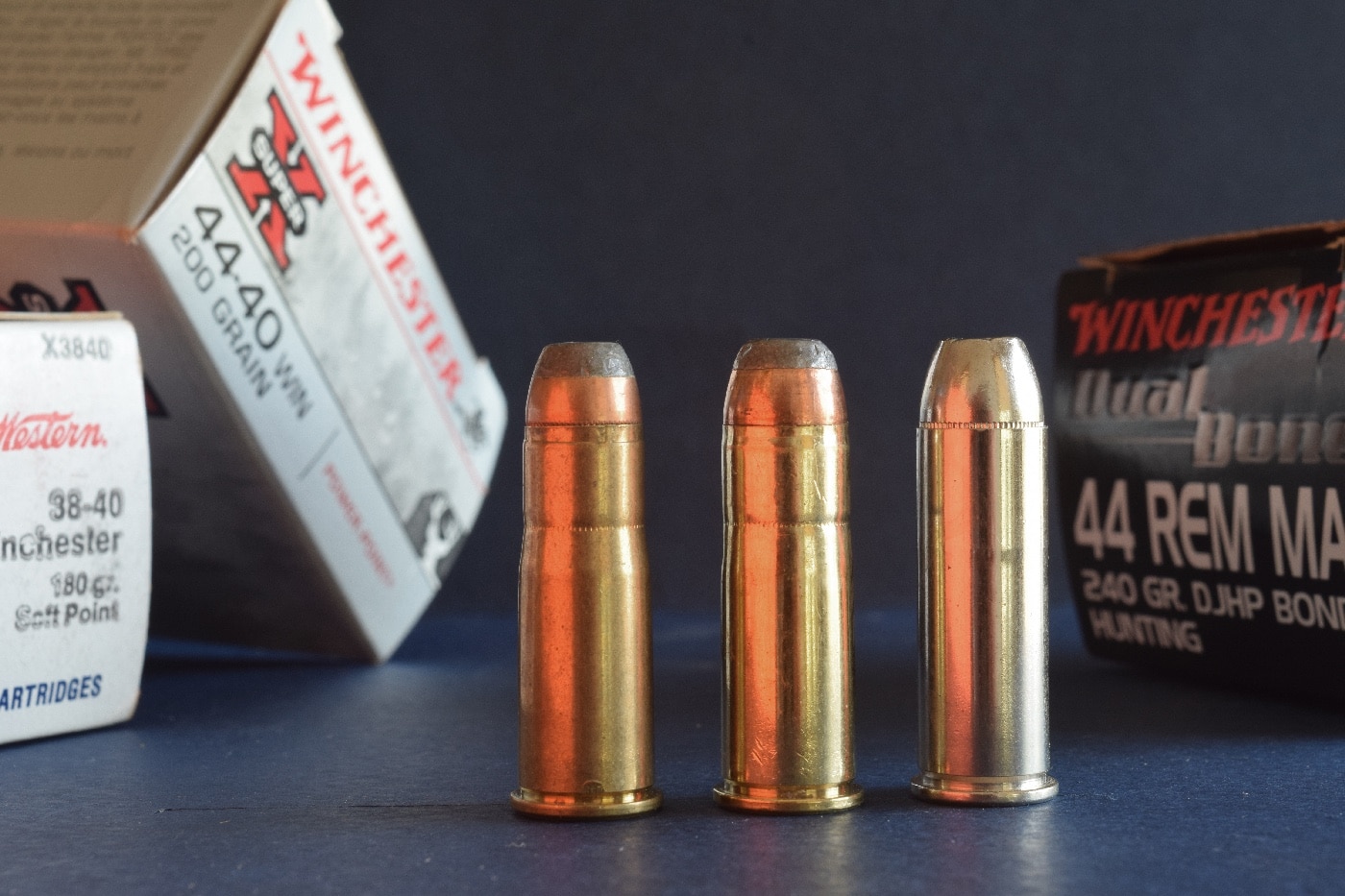
Unregulated shooting had so reduced grizzly numbers that less than 800 were thought to remain in the lower 48 states when the Endangered Species Act passed in 1973. Two years later, the grizzly was “listed” and hunting banned there. In much of its range, the bear’s numbers have since doubled. Human activity West-wide, from hunters and hikers as well as stockmen, keeps bear attacks in the news.
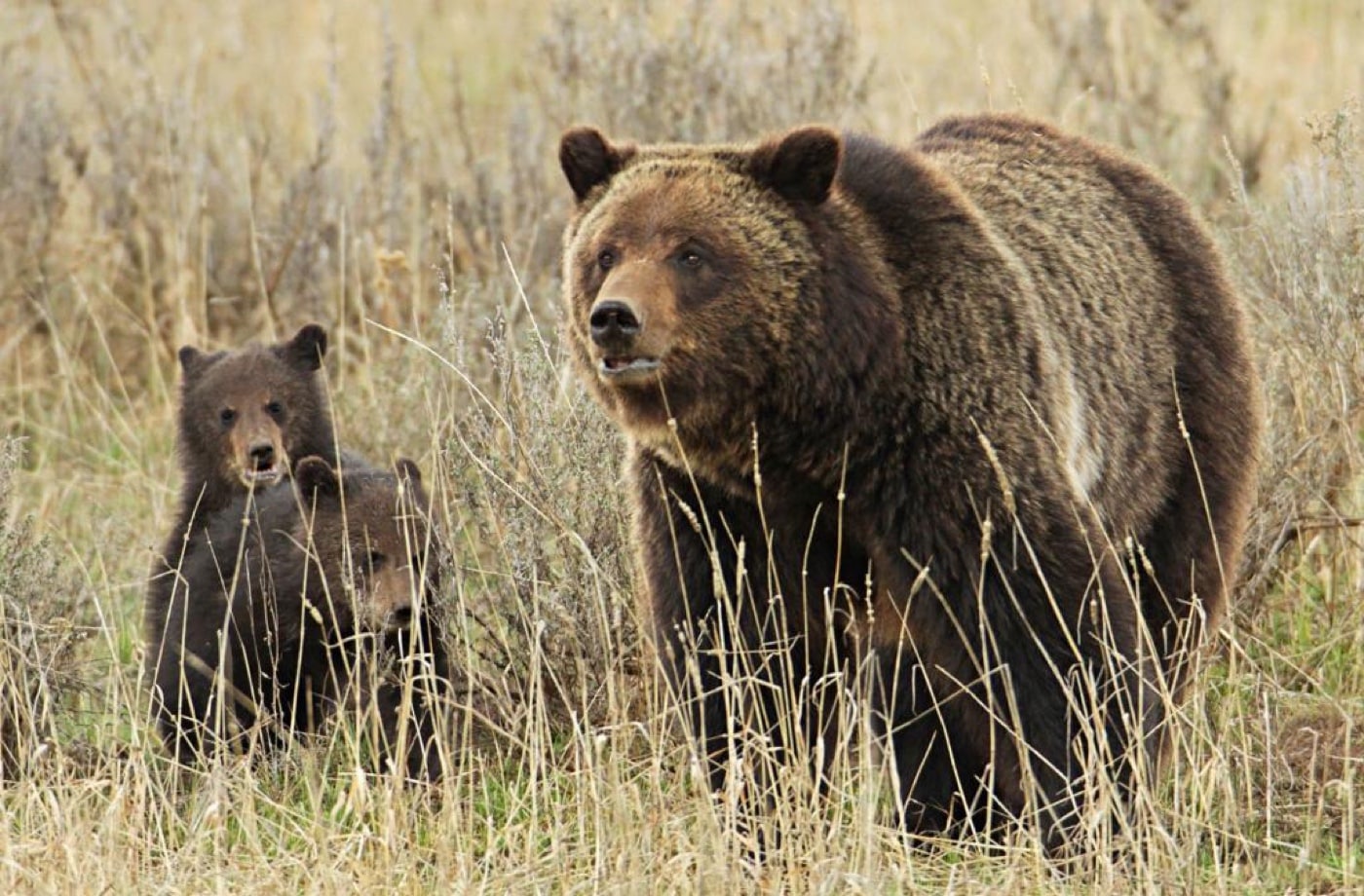
Two years ago, a Montana hunter trailing a wounded deer lost part of his face to a grizzly. Not far away, another hunter was mauled and his guide killed by a grizzly as they field-dressed an elk. I’ve ridden pack trails in Wyoming where grizzlies were so plentiful their tracks covered the horse and mule prints. A hunting guide from our camp may have saved himself and clients by firing his .357 into the earth in front of a sow grizzly that sprinted towards them, half-grown cub in tow. The bears turned at the last moment, dashing past the hunters on either side.

Most bears don’t want trouble. For decades, Wyoming outfitter Ron Dube guided hunters where grizzlies abound. He never had to shoot a bear. “I stayed alert. When a bear surprised me, I stayed calm and didn’t show fear.” When a grizzly visited his campfire as he was frying fish, Ron waved his arms and shouted at it to leave. It did. But not all bears are so compliant. Like people, they have moods. Once Dube and a client came upon a big grizzly boar on a carcass. “Unaware of us, he paced, growling and bristling. A dangerous bear. We backed away quickly.”
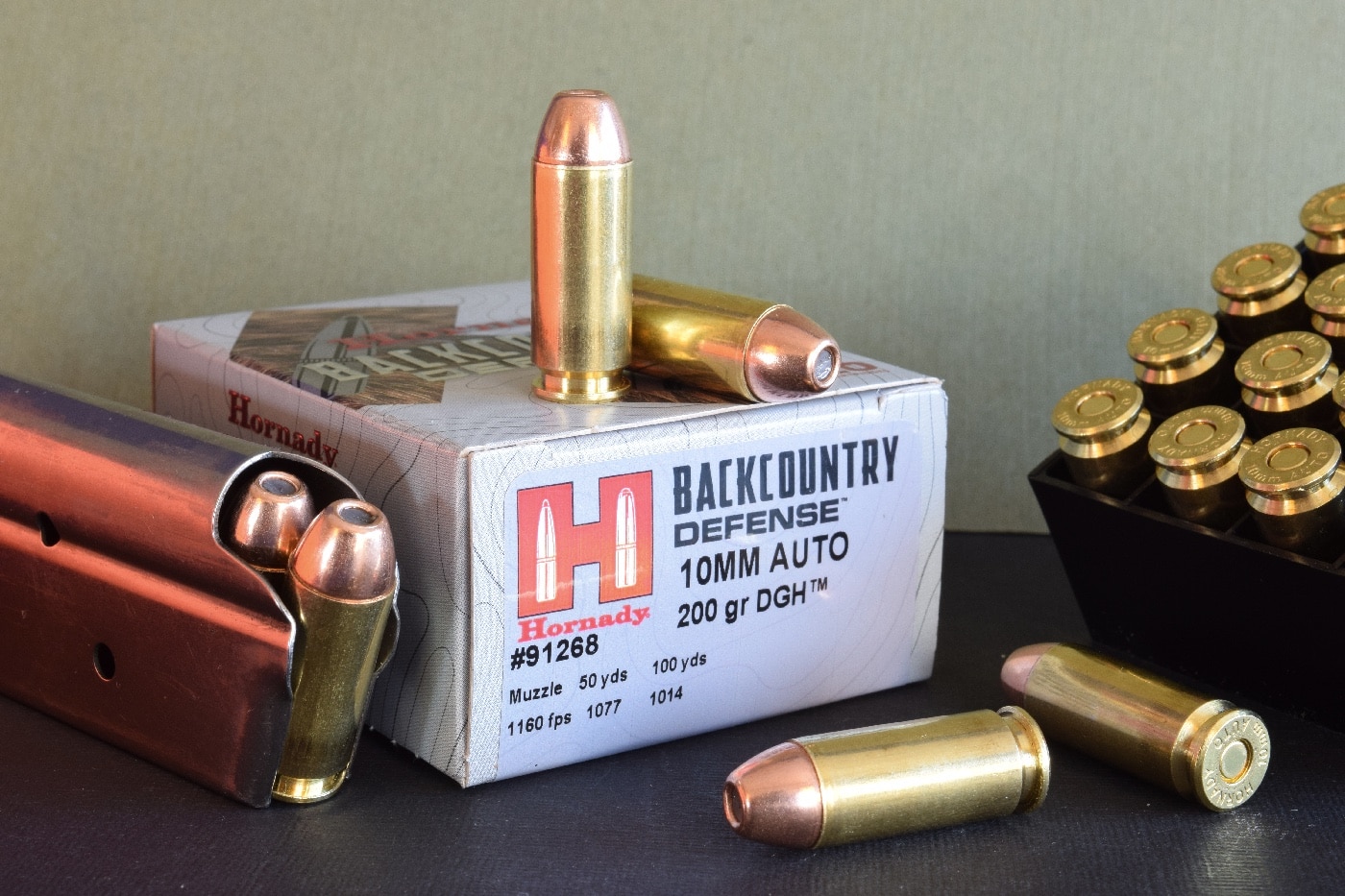
Continent-wide, black bear attacks are less common than those by grizzlies. They get less media attention too, partly because of the grizzly’s fearsome reputation and its protected status. But black bears pose a different threat. While grizzly attacks typically follow perceived danger to cubs or intrusion on a carcass, black bears sometimes view people as prey. A study of bear attacks in Canada between 1929 and 1979 showed black bears accounted for 72 of 152 bear attacks, 12 of 26 human fatalities. In Alaska, only 19 of 170-odd maulings since 1900 were attributed to black bears. The disparity in data is understandable. Canada has four times as many black bears as Alaska, but roughly an equal number of grizzlies.
A New Option
Handguns have saved hunters from bears since black-powder days. But not reliably. Indeed, after the Corps of Discovery found grizzly bears to be both surly and fearless, Meriwether Lewis discouraged his hunters from engaging them with rifles unless the men were in pairs. A couple of generations later, a detachment of U.S. cavalry pestered a lone grizzly. After it shrugged off a volley of .36-caliber balls from 1851 Colt Navys, the shooters put spurs to their steeds.
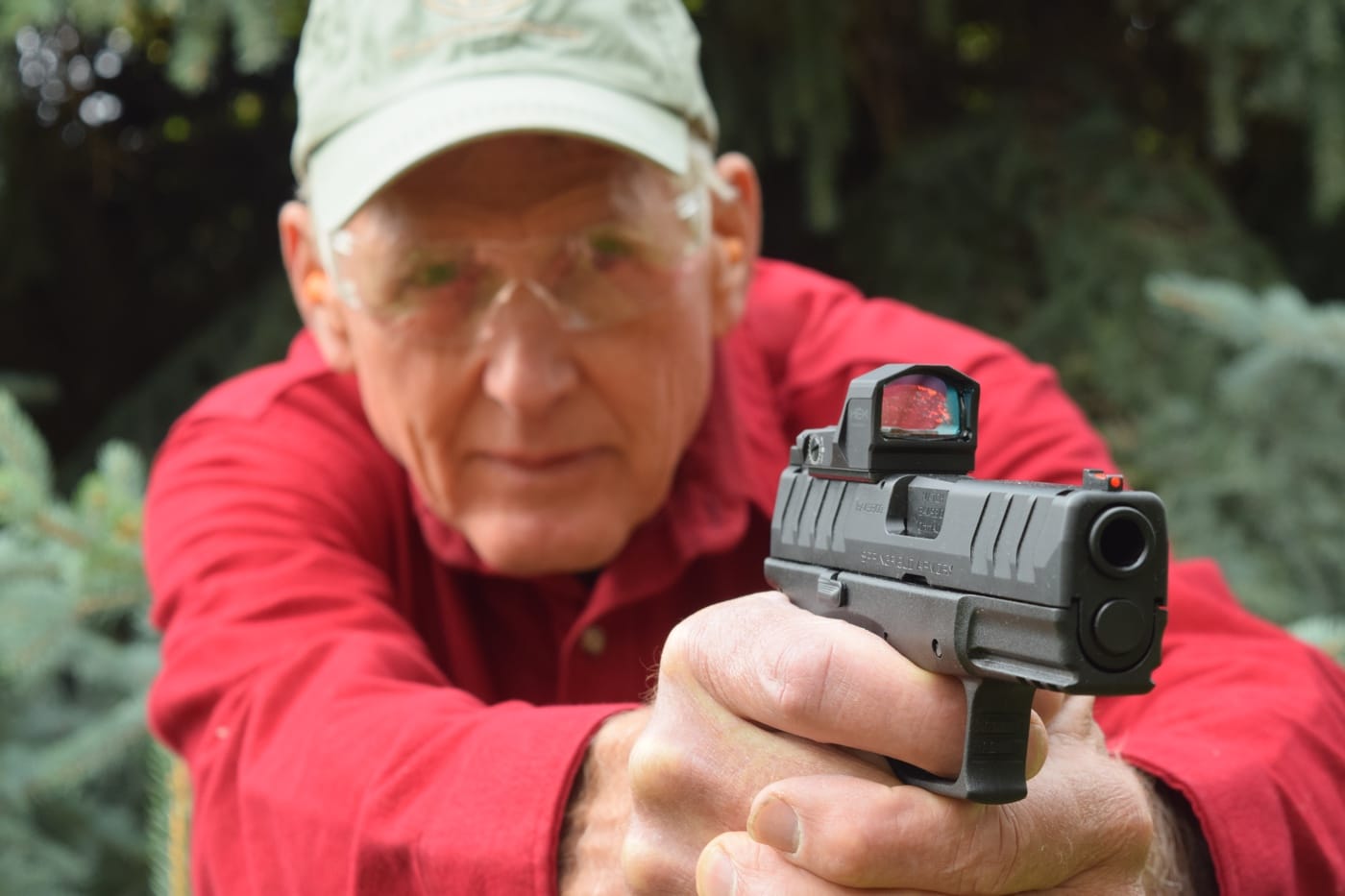
In 1956, the .44 Magnum upstaged the .357 Magnum and hot loads in .44-40, .44 Special and .45 Colt. But despite its fearsome recoil, the big .44 didn’t impress all bears. “I once trailed a wounded brown bear into a thicket, thinking it dead,” an Alaskan guide told me. “It wasn’t. And it paid no attention to the six .44 Magnum bullets I sent into his ribs as it ran me over getting away.”
Stopping a big, adrenaline-charged beast with a pistol bullet differs from killing the same animal with a shot to the ribs. An outfitter leading two anglers along an Alaskan stream turned to see them drop into tall grass as a bear appeared from the side — near enough to seem a threat. The outfitter fired his 9x19mm Parabellum repeatedly into the bear’s chest, from both sides as it turned. The animal expired.
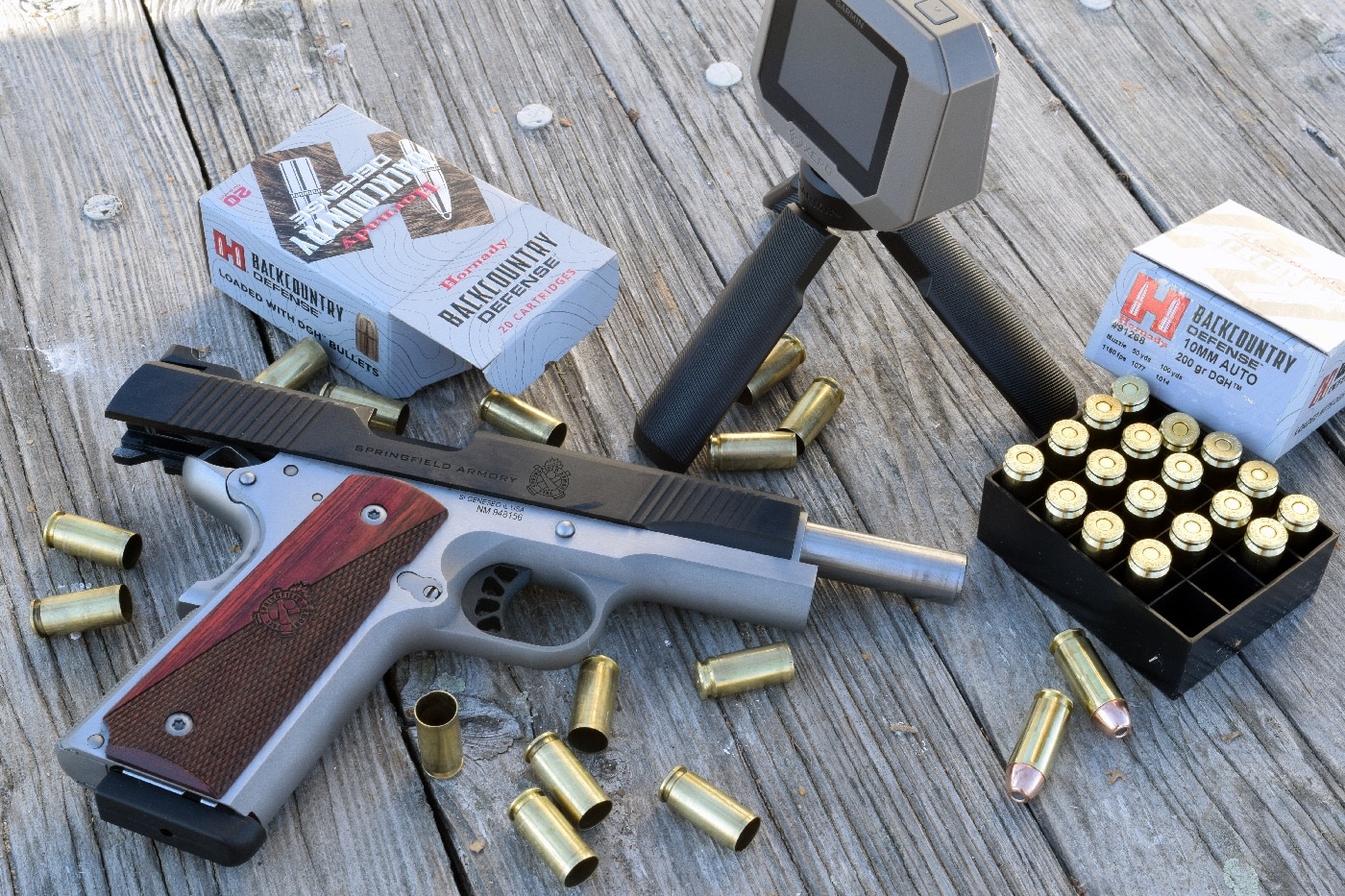
This veteran Alaskan dismisses much of the blather about “bear insurance.” He insists that to be useful, a handgun must be small enough and light enough that it’s always with you. “Like my 9mm. My .44 hits a lot harder, but if it isn’t with me, it’s no bear gun at all.” He adds that his little pistol is easy to point with one hand, in case the other is occupied or disabled. It holds more rounds than a revolver, and as recoil is light, they can be fired in quick repetition to correct aim. Another guide says hollowpoint bullets don’t drive deep enough through a bear’s thick bones and chest muscles from the front. “Don’t count on hitting the brain unless mid-step over a log you can turn and pulp tomatoes thrown at you at 35 mph.”
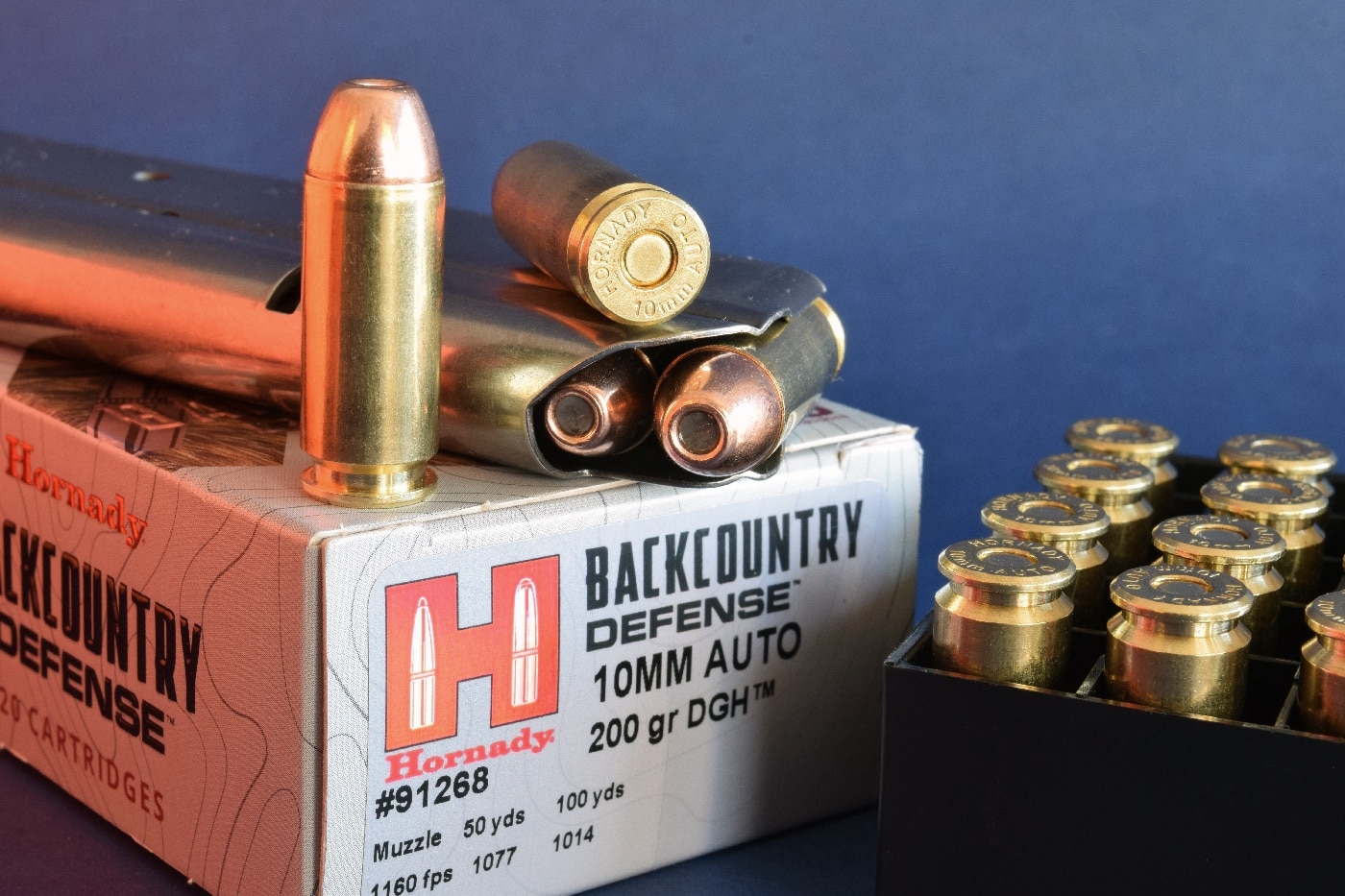
Heavy hard-cast, flat-nose bullets from the likes of Grizzly Cartridge and Garrett are scarce in loads from major ammo makers. Federal’s CastCore line was dropped and has only recently been replaced by the Solid Core. But this year Hornady fills the bear-stopping void with its Backcountry Defense ammunition. It’s not just for revolvers, but includes loads for 9mm and 10mm autos, with DGH (Dangerous Game Handgun) bullets shaped for reliable feeding.
Here is the list with factory-stated velocity and energy:
Where It Counts
Hornady engineer Joe Theilen says the DGH bullet is designed for straight, deep penetration, not to expand. “It’s of protected-point design. The jacket is folded into the nose cavity, thus locking core to jacket there. A bear coming toward you presents a barrier of thick hide, big bones and dense tissue. Our Backcountry Defense bullets and loads were developed to breach that barrier.” When I asked how the bullet is made, Seth Swerczek confirmed “it’s a standard cup-and-core product, but with a heavy jacket that’s long enough to fold over the nose cavity’s rim. You get an ogive that ensures reliable feeding in autoloaders, a bullet that isn’t easily deformed or shoved off its intended course.”
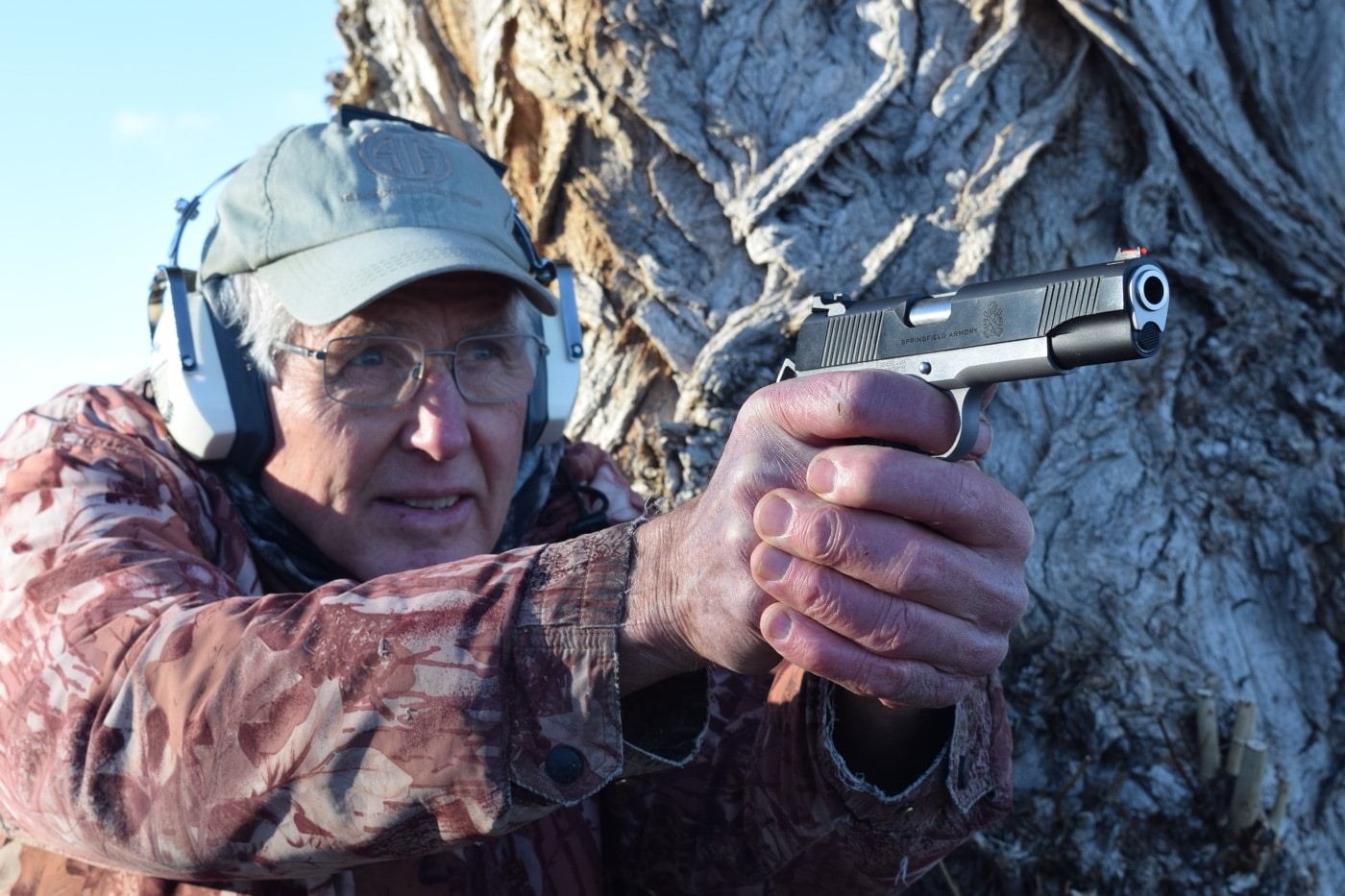
For my first range session with Hornady Backcountry Defense ammunition, I fired the 10mm load in a Springfield Armory 1911 Ronin, a fetching 40 oz. pistol with a stainless frame. Its forged-steel slide, with a contrasting hot-salt blue, houses a 5” hammer-forged barrel. The “tactical rack” rear sight has a ledge to assist with one-hand slide operation in an emergency. Its two-dot square notch pairs up with a red fiber optic front sight. My big hand likes the extended grip safety. The bump at its base assures contact with the hollow of my palm. The 5-lb. trigger pull is exceptionally crisp. Springfield supplies an eight-shot magazine with a basepad.
[Don’t miss Tom Gresham’s article on 10mm for stopping a bear.]
The Backcountry Defense ammunition functioned without fault in the Ronin. Velocities over my Garmin Xero C1 Pro chronograph averaged 1,121 fps, one percent lower than the advertised 1,160 fps. Standard deviation: 10.5. The extreme spread for 20 shots was 43 fps — though dismissing the top reading (1,147 fps) as an outlier cuts ES to 34 fps, and without the next-highest reading (1,138 fps), ES becomes a much cheerier 23 fps. At factory-listed speed, each 200-grain 10mm DGH bullet carries about 600 ft-lbs out the muzzle and brings nearly 460 ft-lbs to 100 yards.
The checkered wood grips on the single-stack 1911 Ronin fit my hands nicely, and over sandbags its sights settle naturally on target. My pulse made them shudder enough to land shots off-center, though, as did trigger pressure moving the pistol. No matter how minor, a bump or a nudge at the wrong time can instantly scuttle a promising five-shot group! Bottom line: Pistol and ammunition no doubt shoot better than my results indicate. Corralling three bullets in a tight knot at 15 yards — even in a single ragged hole — proved easier than keeping all inside a 1.5-inch span. Rogue last shots reminded me that accuracy with a pistol begs mental discipline!
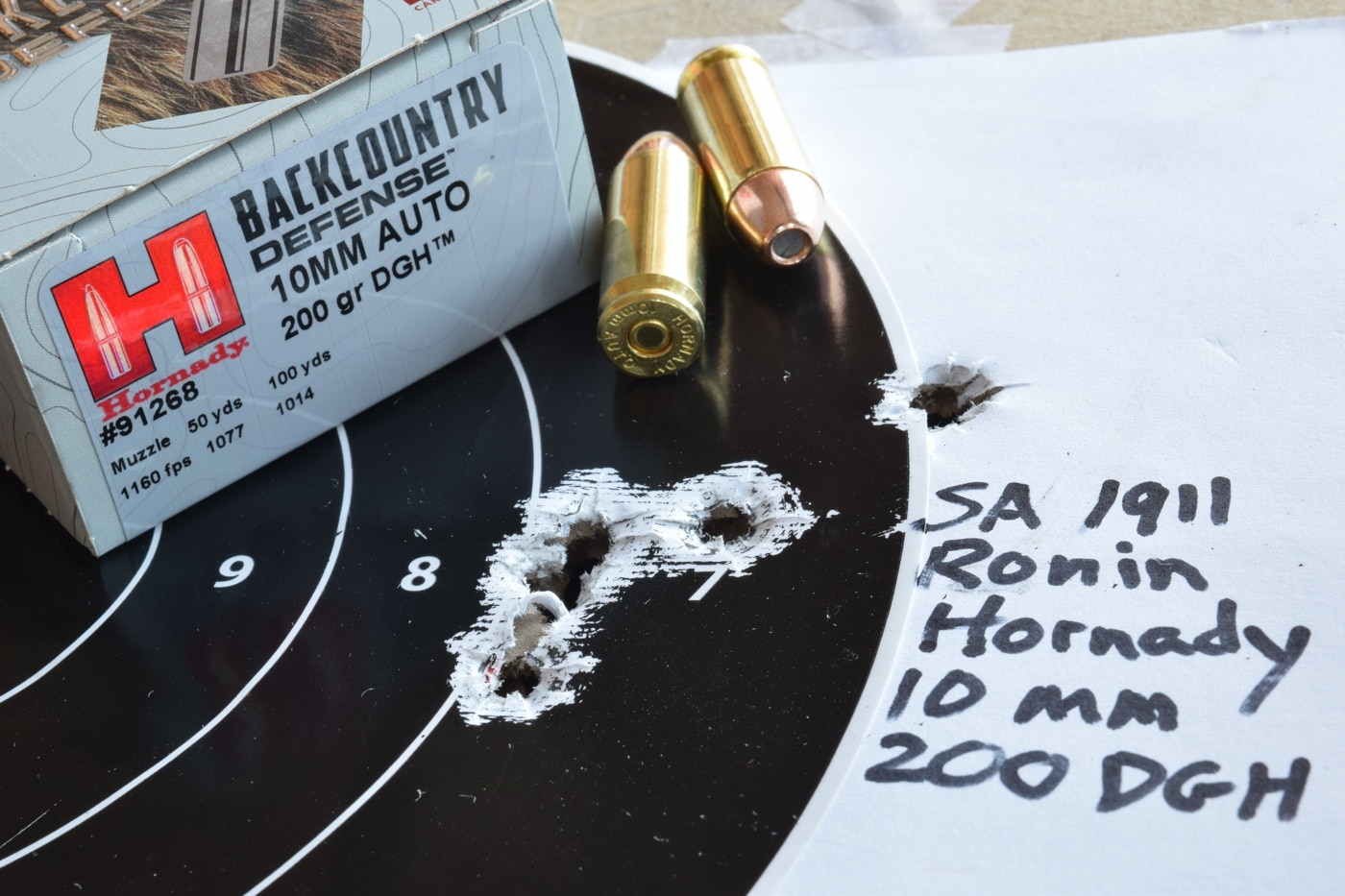
Still, I drilled one 1.3-inch group; and the average of three five-shot groups came in at 1.9 inches.
While that level of precision won’t bring squirrel stew from the crowns of old-growth beeches, it’s surely adequate for keeping bears off your boot laces. Besides, given immediate peril, the inherent accuracy of a handgun and its load have little to do with where bullets land!
Conclusion
Hollow-point hunting and self-defense bullets make modern factory loads much more impressive in gelatin than their lead-bullet forebears. But heavy-bullet handgun ammo designed to punch through the chests and scapulas of sturdily built beasts — and function in woods-worthy autoloaders like Springfield 1911s — is much less common.
With its new Backcountry Defense stable, Hornady is giving hunters and wilderness travelers an option should they find themselves where bears share the trails.
Editor’s Note: Please be sure to check out The Armory Life Forum, where you can comment about our daily articles, as well as just talk guns and gear. Click the “Go To Forum Thread” link below to jump in!
Join the Discussion
Featured in this article
Read the full article here



